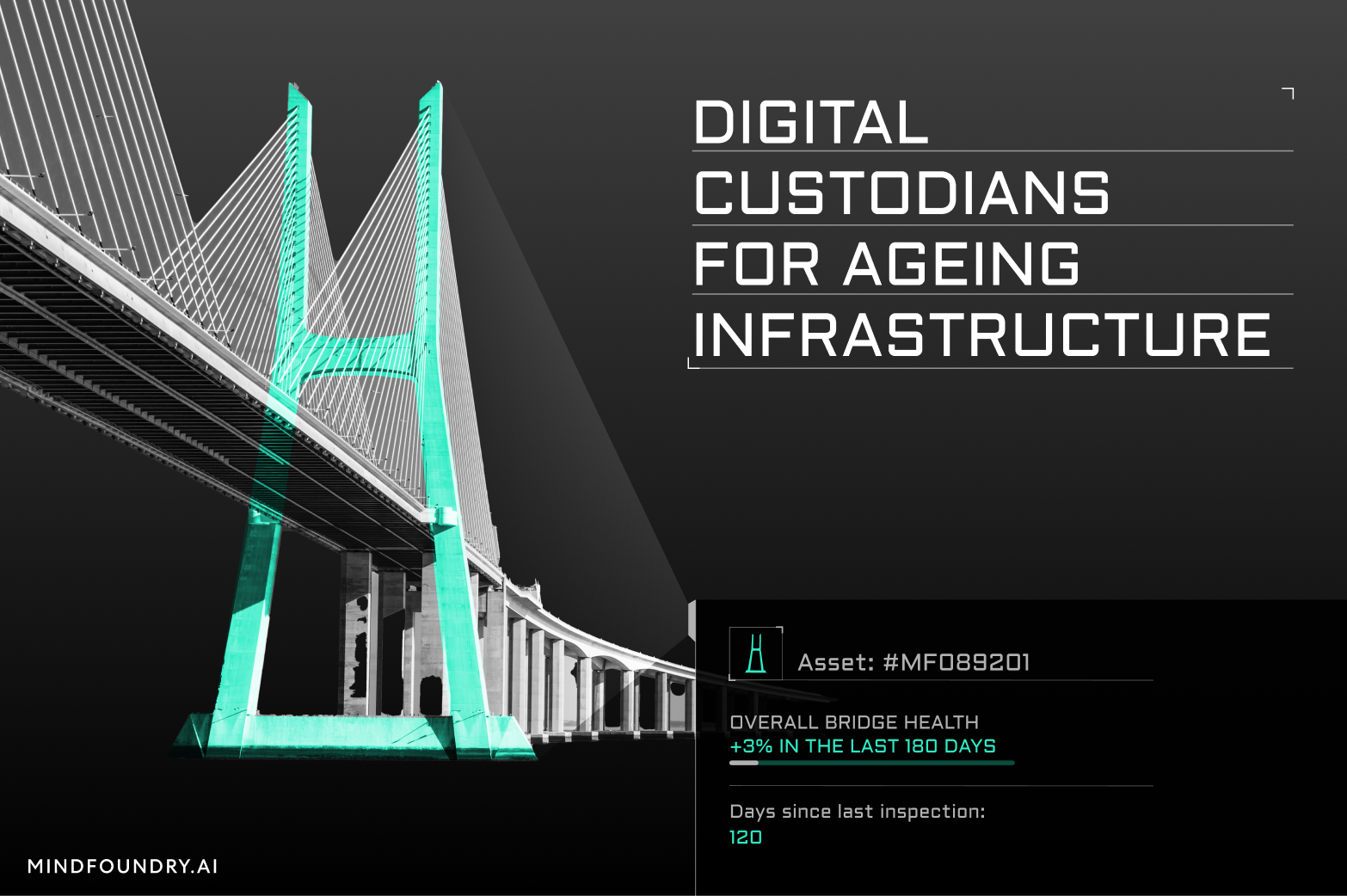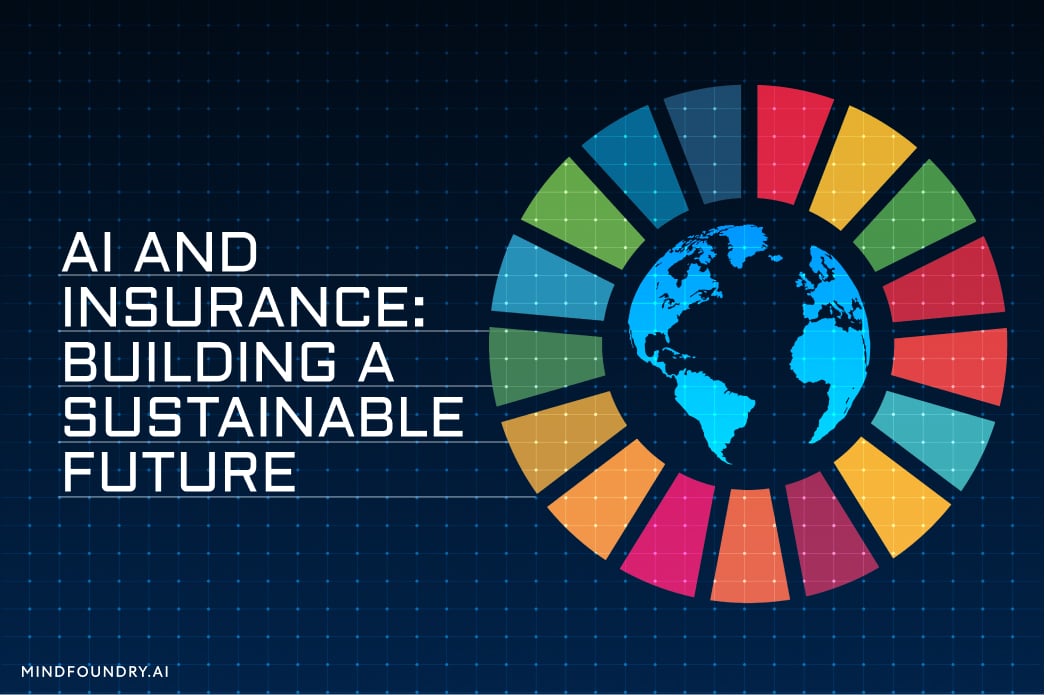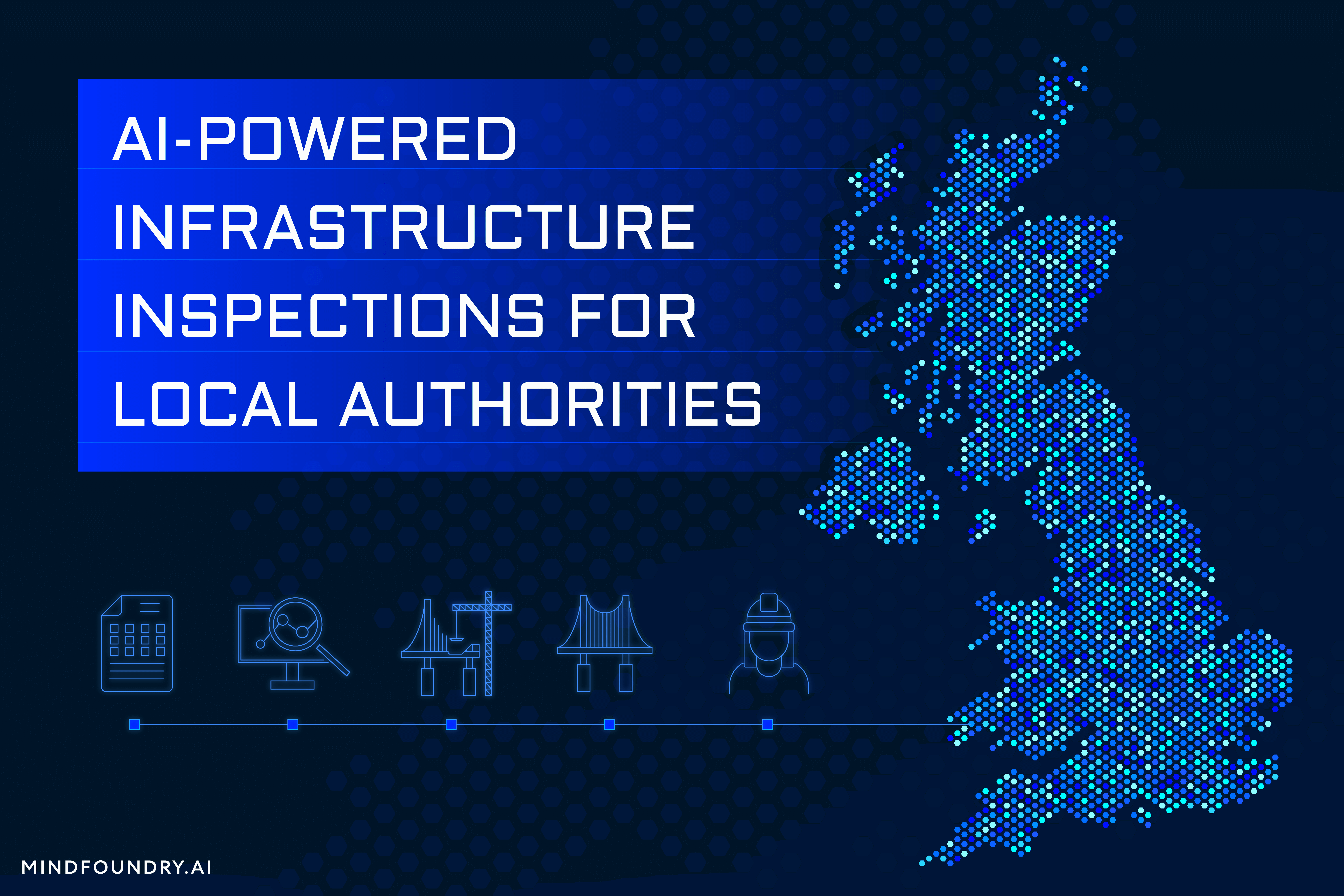AI, Insurance, and the UN SDGs: Building a Sustainable Future
Mind Foundry has been working alongside Aioi Nissay Dowa Insurance and the Aioi R&D Lab - Oxford to create AI-powered insurance solutions whose...

The UK spends £1.5 billion each year maintaining its 100,000 bridges and structures across the road and rail networks. The average age of these structures has now surpassed 50 years, a point at which they begin to enter a phase of accelerated deterioration. Without proactive maintenance, repair costs will rise exponentially, and the loss of connectivity services could have serious consequences for society and the economy.
At Mind Foundry, we believe that AI has a key role in enabling proactive maintenance and effective management of our ageing structures, preventing bridges, buildings, roads, and more from failing, and saving billions of pounds in the process.
However, as AI’s potential grows, the need to mitigate the risks of advanced systems has become increasingly apparent. Mind Foundry is proud to have a team of Creators, alongside WSP, as part of The Advanced Research + Invention Agency’s (ARIA) Safeguarded AI programme, exploring the development of safeguarded AI systems to benefit our critical infrastructure.
ARIA is an R&D funding agency created by an Act of Parliament and sponsored by the Department for Science, Innovation, and Technology. Its purpose is to “unlock technological breakthroughs that benefit everyone.” ARIA funds teams of scientists and engineers to “pursue research at the edge of what is scientifically and technologically possible.”
The programme, backed by £59 million, has set out to “establish a new standard for AI safety”, enabling society to harness the full economic and social benefits of advanced AI while minimising associated risks. Existing safety techniques have significant limitations and lack empirical reliability. Research into methods that offer quantitative safety guarantees has been minimal and often dismissed as impractical. Led by Programme Director David “davidad” Dalrymple, the program seeks to change that by integrating scientific world models with mathematical proofs to develop a “gatekeeper”; an AI system designed to assess and reduce risks from other AI agents, paving the way for safety standards comparable to those in nuclear power and aviation.
Mind Foundry and WSP’s Creators are among nine UK-based research teams that ARIA is funding to explore using AI systems with unique quantitative safety guarantees to unlock transformative improvements in our critical infrastructure. This research aims to demonstrate how safeguarded AI systems can help make significant improvements in vital sectors.
Mind Foundry’s ambition is to focus on our civil infrastructure and transform how it is maintained, making it more cost-effective and sustainable. Across the UK, many of the bridges, tunnels, roads, and flood defences that underpin our society are ageing, deteriorating, or increasingly strained by climate-related pressures. Our goal is to demonstrate how safeguarded AI can drastically enhance how these assets are managed.
We have recently been working to make this goal a reality in partnership with infrastructure experts and civil engineers from WSP. Rather than relying on traditional inspection cycles and delayed interventions, we aim to build intelligent, proactive systems that anticipate problems before they occur. This approach has the potential to reduce costs, minimise disruption, and significantly improve public safety.
By developing AI systems with quantitative safety guarantees, we aim to show that these tools can be trusted in high-stakes environments. This could help deliver a future where infrastructure is not just monitored, but intelligently and safely managed at scale.
Our team of Creators is working in partnership to develop AI-driven agents for the Safeguarded AI project to support proactive maintenance of the UK’s ageing civil infrastructure. This important work will be undertaken under the guidance of a steering committee of Machine Learning and civil infrastructure experts:
To support responsible innovation, we will detail a curriculum of relevant high-stakes and high-impact AI use cases to help the programme develop AI safeguards. These safeguards will provide formal guarantees that an AI model is safe to use, enabling widespread industry adoption and unlocking real and lasting value.
Modern infrastructure management has evolved in recent years from the custodianship of engineers to a more data-driven, externalised approach with digital systems and consultancies. While this has improved oversight and other facets of infrastructure management, some vital aspects of custodianship have been lost. With growing challenges like climate change and economic uncertainty, more proactive decision-making has become crucial to ensuring the safety and longevity of our roads, railways, bridges, and more.

Key challenges asset owners face in achieving proactive maintenance include acquiring and retaining a good understanding of their structures, making a compelling business case for increased maintenance funding, and prioritising short-term and long-term benefits across a portfolio of thousands of assets.
We believe the solution to all these challenges lies in Digital Custodianship.
Digital Custodianship preserves institutional knowledge, integrates historical data, and applies AI-driven insights to extend asset life and improve resilience, ensuring the right knowledge is available to the right people at the right time.
Our vision is to deploy AI agents, called Digital Custodians, that will quantify, track, and forecast asset condition, as well as optimise maintenance costs across asset portfolios. This could include:
However, deploying Digital Custodians throughout the civil infrastructure sector first requires building trust. This project and ARIA’s support will enable us to explore new ways of evidencing the safety of AI systems. It will provide assurance to customers, users, and regulators that the Digital Custodian will make the right decisions regarding maintenance analysis, assessments, prioritisations, and recommendations. Without this assurance, AI-based solutions will struggle to make it to production within this sector or will fail entirely.
Visions don’t become reality overnight, and we believe the answer starts with data. We are putting in place the building blocks for Digital Custodians, starting with enhancing the foundational data layer, in a product called Windward Inspect.
Windward Inspect combines AI and Machine Learning, image correlation, and mobile-based inspection tools to create a seamless, efficient workflow for bridge inspection and maintenance. It ensures that asset owners and managers can efficiently capture and utilise high-quality visual condition data, both during the initial warranty period and throughout the asset’s life cycle.
With Windward Inspect, you can analyse and understand how a defect has changed over time.
WSP needed a solution that would not only lower the costs of manual inspections by reducing the time it takes to perform the asset assessment but also bring implicit knowledge from the structure on-site into the office, where that knowledge could be used to optimise predictive maintenance against budgetary constraints.
Using Windward Inspect, WSP saw:
“It's not just about saving money but about improving quality. Windward Inspect lets us pass on an understanding of an asset to all the people who need to know it. It helps us reduce costs today, but the real value is how it gets data collection right from the very beginning and then uses that to improve the maintenance over the lifetime of the asset for future generations.” - John Bennetts, Structures Asset Management Lead, WSP.
Infrastructure is one of the many sectors that stands to gain from AI’s immense potential, but this potential cannot blind us to the technology’s risk when developed without proper safeguards. ARIA and Mind Foundry are committed to responsible AI development that drives value across the infrastructure sector to the benefit of everyone in society.

Mind Foundry has been working alongside Aioi Nissay Dowa Insurance and the Aioi R&D Lab - Oxford to create AI-powered insurance solutions whose...

Local authorities need to support their funding requests with high-quality data. The problem is that they can't obtain this data at the required...

The UK-USA Technology Prosperity Deal sees overseas organisations pledging £31 billion of investment into UK AI infrastructure. As AI investment...